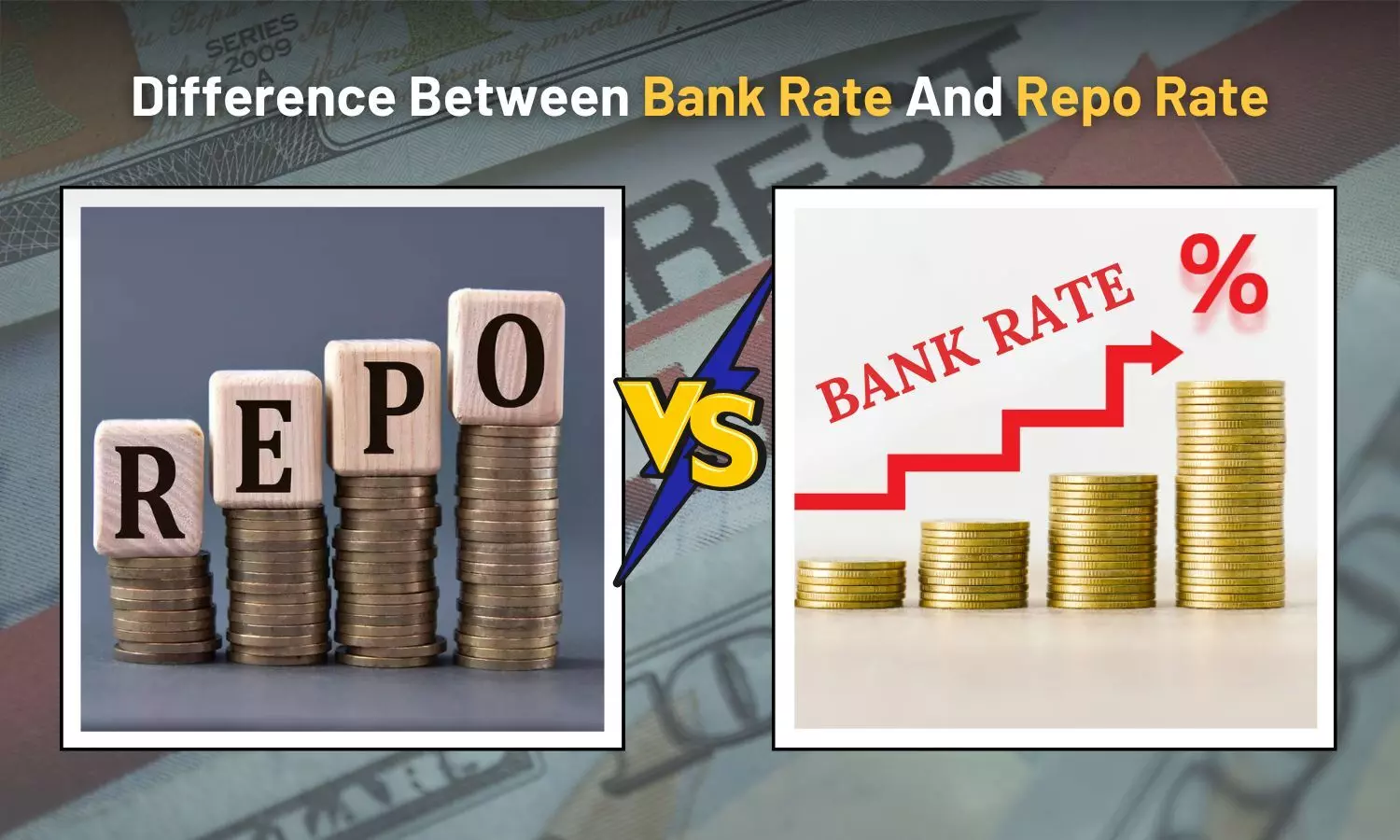What is the Difference between Bank Rate and Repo Rate?
The fundamental difference between a bank rate and a repo rate is their purpose and duration.
image for illustrative purpose

In today's day and age, where change is the constant norm, managing finances has become a daunting task for every individual. With rising living costs, unexpected expenditures and limited savings, people have embraced personal loans as a way to bridge the financial gap. To highlight the fact, as per the survey conducted by Saral Credits, they have found that roughly 67% of the Indian population has taken personal loans at least once to meet their financial requirements.
Even though getting a loan is now a straightforward process, people still have to deal with interest rates. Thus, understanding and comparing interest rates has become crucial, ensuring the loan is affordable and manageable in the long run. In this context, two critical terms often pop out at the fore when discussing monetary policy rates: the bank rate and the repo rate. Even though they are both associated with interest rates, their functions and effects on the economy are different.
So, let's discuss what bank and repo rates are all about, their impact and their key differences.
Bank rate vs repo rate: Meaning
The bank rate, a.k.a. the discount rate, is the interest rate at which commercial banks borrow money from the central bank to meet their short-term liquidity requirements. Moreover, central banks use it to control the amount of money in circulation within the economy.
Impact:
1 Higher bank rates promote saving over borrowing, which reduces the amount of money in circulation and may help to slow down inflation.
2 On the other hand, a lower bank rate encourages borrowing while discouraging saving, expanding the money supply and possibly enhancing economic activity.
The repo rate, short for repurchase rate, is the interest rate at which commercial banks lend and borrow money from each other for a short time, usually overnight. Speaking of the repo rate, it is also set by the central bank and affects the level of liquidity in the banking system.
Impact:
1 Higher repo rates result in compressed interbank liquidity and possibly higher lending rates for individuals and companies because they make it more costly for commercial banks to borrow from the central bank.
2 A lower repo rate increases the availability of funds for commercial banks, leading to looser interbank liquidity and potentially lower lending rates.
Bank rate vs repo rate
Although the RBI uses both rates as tools to influence the economy, there are a few key distinctions between them.
Bank rate and repo rate comparison table:
Key Factors | Bank Rate | Repo Rate |
Also Known As | Discount rate | Repurchase option |
Rate | The amount is higher | Lower than bank rate |
Influence | The higher bank rate involves liquidity in a system of contracts. The lower bank rate only encourages borrowing | When there is a dip in the repo rate, the borrower usually gets offered loans at a lower rate. So, the hike in rate will increase the borrowing limit |
Primary Goal | The aim is to access the long-term monetary goals of the bank | The aim is to cater to the short-term financial needs of financial institution |
Security | The bank is not liable to offer any security | The bank is liable to provide security |
Tenure | Available overnight or fortnight | Available for a short tenure of one day |
Agreement | No agreement is required since no collateral is involved | The bank and RBI both need to sign a repurchase agreement |
In a nutshell, the bank rate and the repo rate are both important tools used by the central bank to govern the economy, but they serve different tasks and have different consequences on investors and debtors. Therefore, recognising the differences between these two notions is critical for making sound monetary decisions in banking and finance.
Frequently Asked Questions (FAQs)
Q: Is the bank rate and repo rate similar?
No, they are not similar. In fact, the repo rate is lower than the bank rate.
Q: What is the bank rate definition?
It is the rate at which the central bank lends money to commercial banks, typically for a longer duration.
Q: What is the repo rate definition?
It is the rate at which the central bank lends money to commercial banks for a short period of time, particularly overnight or for a few days.
Q: Are bank and repo rates the same across all nations?
No, the specific terms and names of these rates vary across countries.
Q: Do RBI bank and repo rates change frequently?
Yes, they change every year. The current repo rate, as fixed by the RBI, is 6.50%.

